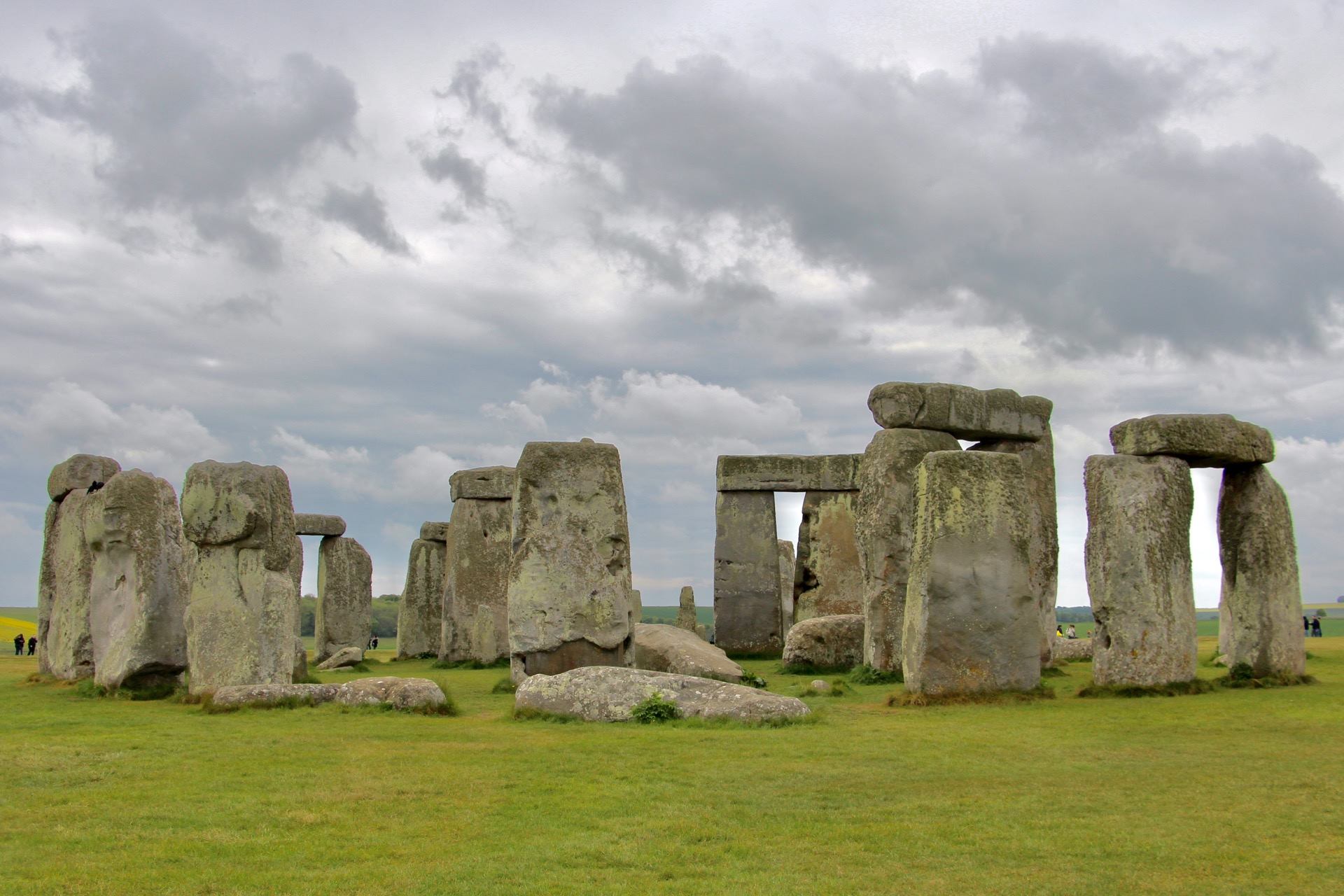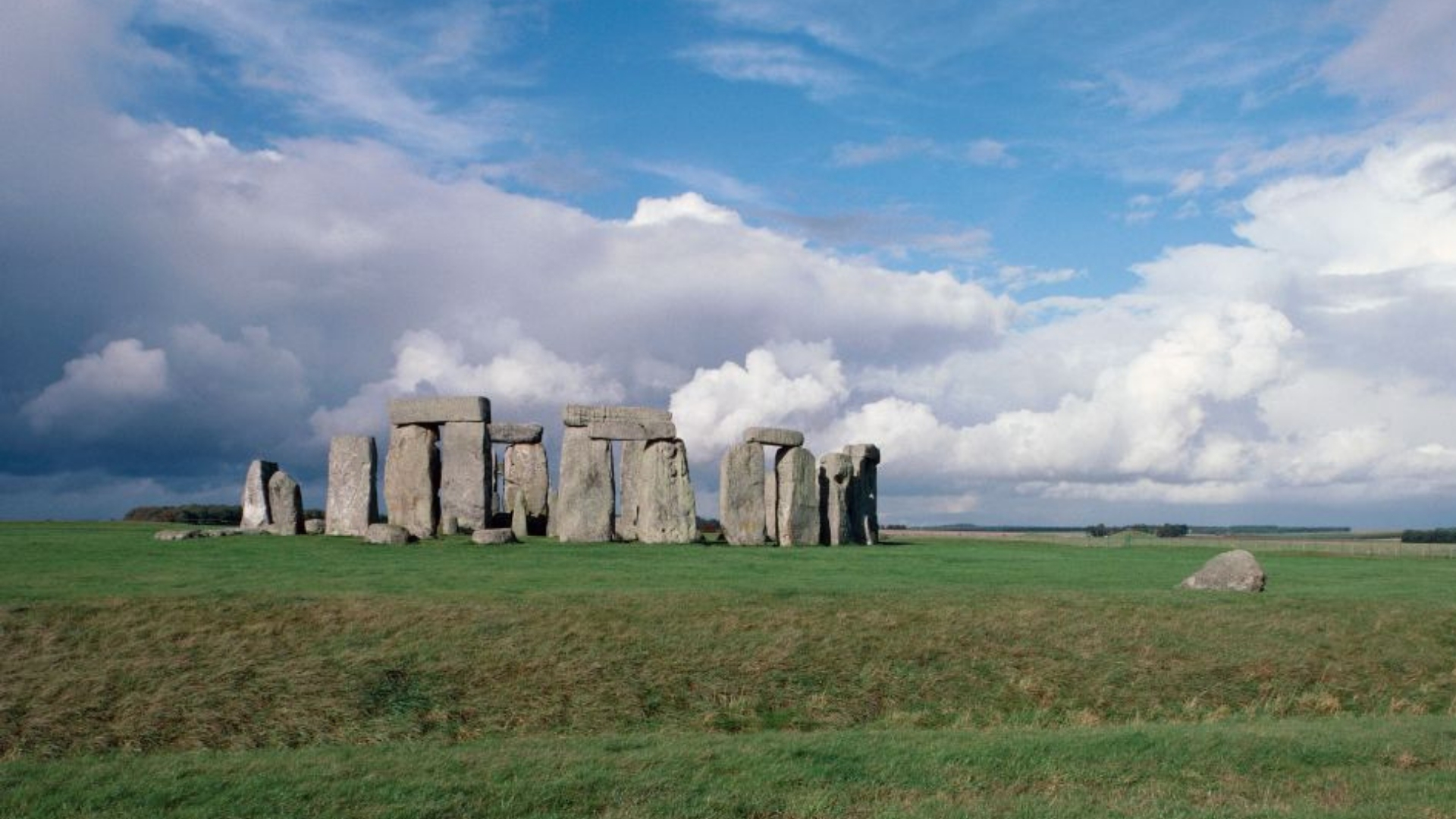It’s the most famous and ancient wonder of our planet. And, it’s one of the most visited monuments in the world. Stonehenge is a UNESCO World Heritage Site that was built over 5,000 years ago as a sacred site for the people who lived there, but also as an astronomical observatory. It’s located on Salisbury Plain in Wiltshire, England, about 30 miles southwest of London. View Tours to Stonehenge here.
Although the exact date when this monument was first built isn’t known for sure, we do know that it was constructed during the late Neolithic period from around 3000 B.C. to 2500 B.C., which means that it’s been here for almost 2,500 years now! This massive stone complex consists of three giant standing stones (or sarsen) which are arranged like a horseshoe. They have a diameter between 4-5 meters and weigh up to 25 tons each! The inner ring of rocks has two pairs of these stones that form a huge passage grave. They are thought to be connected by a “causeway” or avenue made of smaller stones. There are also some stone rows that you can see outside of the main circle.
The word “Stonehenge” comes from the Old English words stan meaning “stone” and henge meaning “ring.” So, it literally means the “circle of stones.” Today, archaeologists believe that this amazing structure was built by a civilization called the Beaker People, who were hunter gatherers living near the River Avon at the time. Archaeologists think that they were farmers whose culture spread across Europe through trade and warfare. Some of them may have come from France. Others may have traveled along a route that went down the Rhine river into Belgium and Holland before crossing the channel and reaching Britain.

There are several theories regarding why the Beakers decided to build such a large, impressive structure. One theory says that it was used as a temple for worshiping the sun. Another says that it was used as a burial ground for important members of their society. But, whatever its history may be, today, Stonehenge is still an awe inspiring place. There is something really special about standing in the center of the stones. You get a sense of how big everything actually is. There are no cars driving around; it’s just you and the stones. If you want to take pictures, you can either use your phone camera or bring a digital camera. You will need to bring a tripod because the stones are very heavy. And the weather can change quickly! Bring a rain poncho because you never know when it will start raining. Just remember to keep your distance from the stones so you don’t trip over them. Or, if you decide to take a selfie with the stones, make sure that your hands are clear of the holes before pressing the shutter button.
To reach Stonehenge, you can either drive there or take public transportation. The closest train station is Marlborough. From there, you should plan to spend about 90 minutes to get there. The best way to get there is by car. You can either drive yourself or have someone else pick you up. The best time to visit would be mid-day, right after the morning rush hour, or even early evening. The roads around Stonehenge are narrow, so you may feel like you’re stuck in traffic. Don’t worry though. There aren’t many other cars around.
When you get to Stonehenge, you will find a parking lot where you can leave your car. Then, go inside the visitor center and look around. Next, head out onto the avenue leading to the stones. Don’t forget to put on your safety glasses and gloves before going out onto the dirt road. Wear comfortable shoes too, because the path is quite uneven. And don’t let anyone tell you different. There are plenty of other tourists taking pictures of the stones. The only difference is that you’ll probably be able to hold your own camera steady enough to capture the moment. The stones are beautiful and worth waiting for. You might also want to stop to eat lunch nearby if you haven’t eaten yet. There are lots of restaurants along the A303 highway. But, be sure to avoid eating in the area directly next to the stones, especially if you have any allergies.
After you finish photographing the stones, walk back towards the visitor center. You will pass a few more prehistoric standing stones that are part of the same complex as Stonehenge. When you arrive at the visitor center, grab a map of the site and pay your admission fee. Afterward, you can go upstairs and check out the exhibits. There are lots of interesting artifacts that you won’t want to miss. Take a look at the interactive displays that allow you to learn about the archaeology of the area. Also, there are video presentations that explain what happened at Stonehenge throughout history. The last room is the gift shop where you can buy souvenirs and refreshments. Before leaving, take a good look around the outside of the building because you’ll likely return again soon.

If you want to get a closer look at the stones, you can hire a guide for a small additional charge. Guides usually wear hard hats and safety vests while working on the site. They also have a sign that states the maximum height that visitors can climb to view the stones. If you want to take this extra step, contact the visitor center ahead of time to make reservations. You can also rent tents or sleeping bags to stay overnight if you wish. The visitor center does not provide anything except information, food, and drink, so you should pack all of your own supplies. You should also bring water, snacks, sunscreen, bug spray, sunglasses, a hat, and a bottle of water. You can purchase ice cream, hot dogs, sandwiches, and other picnic items at the visitor center.
So, what did you think? Was this your first time visiting Stonehenge? What do you think about the site? How much do you think you learned about the history of this amazing monument? Were you surprised at how small the stones looked in person? Did you notice how many people were there? Did you notice how many cars were parked illegally? Would you recommend Stonehenge to others? Is it worth paying the extra to hire a guide? Share your thoughts below!
We hope that you enjoyed learning about Stonehenge. We’ll see you next time on the next page of the Stonehenge Visiting Guide.
